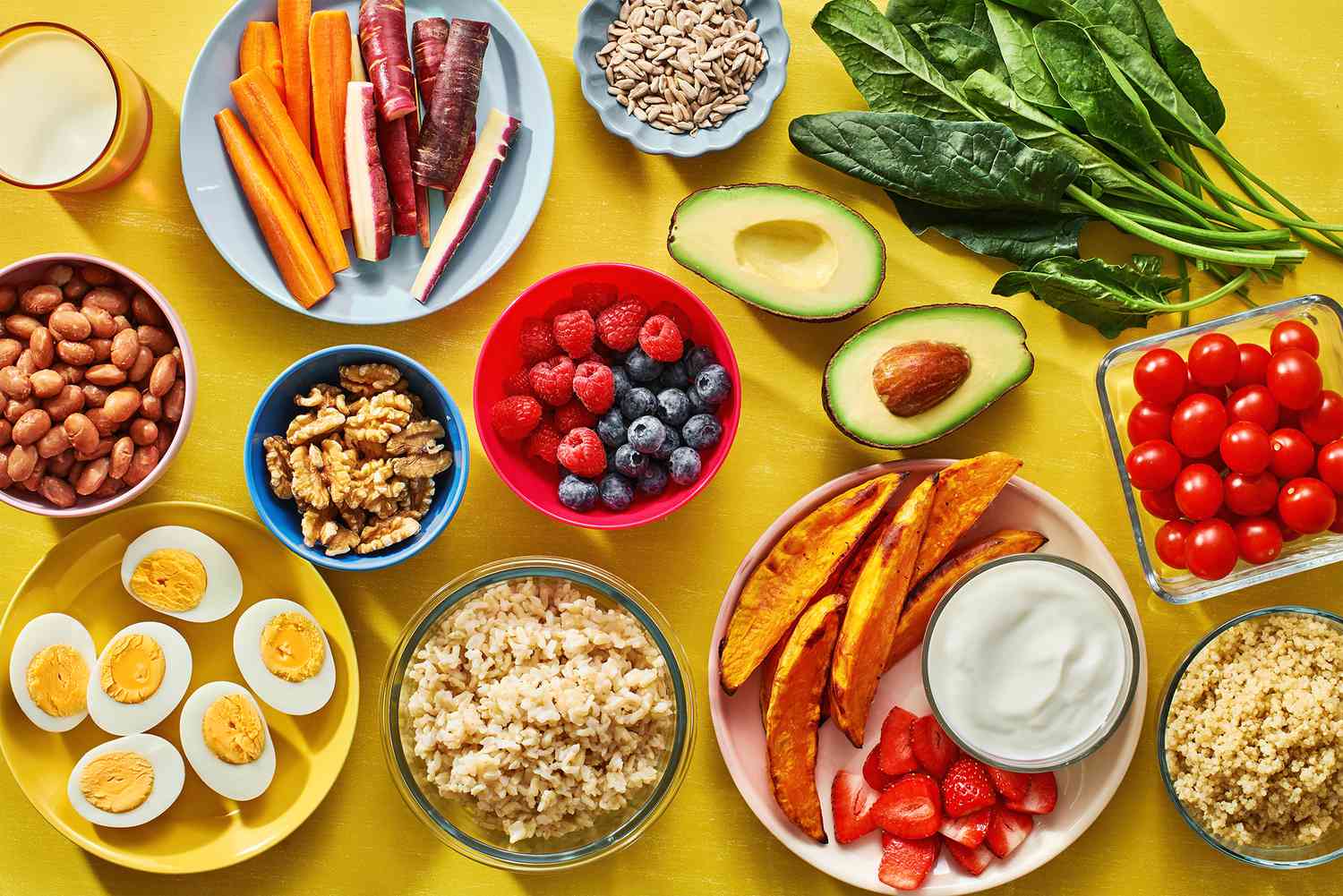HOW TO GROCERY SHOP FOR A MONTH: Grocery shopping for an entire month can seem like a daunting task, but with the right approach, it can save you time, money, and reduce the number of trips to the store. By planning and buying in bulk, you can ensure you have all the necessary ingredients for the next month without the stress of last-minute shopping.
This article will walk you through each step on how to grocery shop for a month. From the process, from meal planning to making your budget.
HOW TO GROCERY SHOP FOR A MONTH
Step 1: Plan Your Meals for the Month
Meal planning is the foundation of successful monthly grocery shopping. By knowing precisely what you will cook throughout the month, you avoid impulse buys and unnecessary trips to the store. Start by selecting your meals for breakfast, lunch, and dinner, and make sure you balance them and include all necessary nutrients. Plan meals you can reuse or repurpose for future use to make your planning more efficient. For instance, if you cook a large batch of roasted vegetables, you could use the leftovers for salads or grain bowls later in the week.
Incorporating leftovers into your meal plan is also a smart strategy to reduce food waste and stretch your groceries further. Instead of cooking fresh meals every day, plan to use leftover dinner for lunch the next day, or freeze extra portions for future use. By doing this, you’ll prepare ready-made meals that can be quickly reheated, making your daily routine more efficient. Additionally, plan and cook freezer-friendly meals—such as casseroles, soups, and stews—in bulk, and store them for use throughout the month."This way, you can always rely on a nutritious meal even on days when you're short on time.
Once you’ve selected your meals, write down all the ingredients you'll need. This list serves as your foundation for grocery shopping, ensuring you don’t miss anything. Keep in mind that meal planning isn’t set in stone. If you end up with extra ingredients or find yourself in the mood for something different, you can make adjustments as needed, but having a plan in place makes it easier to stick to a budget and stay organized.
Step 2: Take Inventory of What You Already Have
Before heading to the store, it’s essential to check your pantry, fridge, and freezer for items you already have. This step helps prevent buying duplicates of what you already own and ensures that you don’t waste food. Start by selecting balanced and nutritionally complete meals for breakfast, lunch, and dinner. Plan meals you can reuse or repurpose for future use to make the most of your ingredients. It's easy to overlook pantry staples, especially items like flour, sugar, and dried beans, which can last for several months.
Next, check your fridge for perishable items. Take note of any items you can use in the coming week, such as vegetables, dairy products, or condiments, to help you plan your meals effectively. Sometimes, people forget ingredients like sauces or dressings tucked away in the back of the fridge, even though they’re often still perfect to use." Lastly, take a look in your freezer to see if you have frozen meat, vegetables, or prepared meals that you can incorporate into your meals for the month. These can save you time and money by reducing the need for fresh shopping trips.
By conducting a thorough inventory, you ensure you only purchase what’s necessary for the month ahead, minimizing waste and reducing your grocery bill.
Step 3: Organize Your Shopping List
Organizing your shopping list is crucial to staying on track and maximizing your grocery shopping experience. Break down your list into categories based on where items are located in the store. This not only saves time but also helps you avoid purchasing items that aren’t on your list. A well-organized list will include sections for produce, meat and proteins, dairy and dairy alternatives, grains and staples, canned and packaged goods, frozen items, and snacks and beverages.
Grouping items by category is especially important when shopping for a month because it helps you stay focused on buying the essentials in bulk first. For example, you may want to purchase grains such as rice, quinoa, and oats in bulk to last for several weeks. Similarly, canned goods like beans, tomatoes, and soups are great for stocking up. By organizing your list this way, you minimize the likelihood of forgetting key ingredients or making unnecessary purchases. Don’t forget also to add non-food items, such as toiletries and cleaning supplies, to ensure you’re well-stocked for the entire month.
Step 4: Make a Budget - HOW TO GROCERY SHOP FOR A MONTH
Setting a budget for your monthly grocery shopping is crucial to avoid overspending. Start by estimating the total cost based on the list of items you’ve written down. To do this, check the prices at your usual grocery store and note the cost of each item. If you shop at multiple stores, you can compare prices to find the best deals on bulk items, especially for non-perishables and household products.
One strategy to help stay within budget is to prioritize the essentials first. Focus on purchasing the core items that you need to prepare your meals, such as proteins, grains, vegetables, and fruits. Afterward, if you have any remaining budget, you can treat yourself to non-essential items, such as snacks or luxury goods. You might also want to look for deals on bulk purchases or discounts for items that can be frozen or have a long shelf life. Keep in mind that even though you’re buying in bulk, it’s essential not to over-purchase perishables that may spoil before you have the chance to use them.
If you’re unsure about how much to spend, consider reviewing your past grocery receipts to determine a monthly average. This will provide a rough estimate, and from there, you can adjust it according to your meal plan.
Step 5: Choose the Right Store(s)
Choosing the right stores for your monthly shopping is crucial to making your grocery trip efficient and cost-effective. Warehouse stores like Costco or Sam’s Club are great for purchasing items in bulk, especially non-perishable goods such as grains, canned goods, and snacks. If you have a large freezer, these stores are also ideal for stocking up on frozen meats and vegetables, which can last for months. Buying in bulk helps reduce the overall cost per unit and ensures you have enough to last for the entire month.
However, warehouse stores may not always have the best deals on fresh produce or dairy, so you might also need to visit your local grocery store. Grocery stores typically offer a wider selection of fresh items, including fruits, vegetables, meats, and dairy products. It's also a good idea to keep an eye out for sales on fresh items that you can freeze or use in the first few weeks of the month. Farmers' markets are another great option for stocking up on fresh, seasonal produce. Often, these markets offer better prices on produce that’s locally grown and fresher than what you would find in the supermarket.
For those who prefer convenience, online grocery shopping can be an excellent option. Many stores now offer delivery services or pickup options, saving you the hassle of wandering through aisles. You can also find bulk items or specialty foods at online stores like Amazon, which may offer better prices for organic or hard-to-find ingredients.
Step 6: Stock Up on Non-Perishable Items
Non-perishable items are the backbone of your monthly grocery haul. These items have long shelf lives and can be bought in bulk to ensure you have everything you need without frequent trips to the store. Focus on stocking up on grains, such as rice, pasta, quinoa, oats, and flour. These pantry staples can be used in a wide variety of dishes and provide the base for many meals throughout the month.
Canned goods are another excellent ooptionption for stocking up. Items like beans, tomatoes, soups, and vegetables can last for months and are incredibly versatile. They’re perfect for adding to soups, stews, salads, or as side dishes. When you buy these items in bulk, you can ensure you always have something on hand for a quick meal. Similarly, consider purchasing frozen foods, such as fruits, vegetables, and meats. They offer convenience and longevity, and since they’re frozen at their peak freshness, they often retain more nutrients than fresh produce.
Step 7: Shop for Fresh Produce and Meat
After securing your non-perishable items, it’s time to shop for fresh produce and meat. When shopping for fresh items, consider buying in larger quantities, especially if you plan to freeze some of them for later use. Some vegetables, such as carrots, potatoes, onions, and squash, last longer in the fridge and are great for using throughout the month. For fruits, opt for more durable varieties, such as apples, oranges, or pears, which have a longer shelf life.
Keep in mind that some fresh items are more perishable than others, so plan to use them earlier in the month. For example, leafy greens like spinach or lettuce should be consumed within the first week, while root vegetables can be stored for longer. When it comes to meats, buying in bulk can save you money, but make sure to freeze portions that you won’t use right away to preserve their freshness. Purchase larger cuts of meat or whole chickens, and portion them out to use in multiple meals.
Step 8: Consider Meal Prep
Meal prepping is a great way to save time and ensure you stick to your meal plan. After your shopping trip, set aside some time to prepare ingredients for the week ahead. This could include chopping vegetables, marinating meats, or cooking grains in bulk. By doing this, you’ll have ready-to-go components for your meals throughout the month. For example, you could cook a big batch of rice and portion it out for use in stir-fries, grain bowls, or soups.
Another option is to prepare and freeze entire meals. This is particularly useful for dishes like soups, stews, casseroles, and pasta sauces, which freeze well and can be reheated for a quick meal. By prepping in advance, you’ll save time during the week and reduce the temptation to rely on takeout or pre-packaged food.
Step 9: Stick to Your Plan
Once you’ve completed your shopping, stick to your meal plan as closely as possible. This helps ensure that you don’t waste ingredients or money on unnecessary foods. If you find yourself with extra ingredients, try using them in different recipes or freezing them for later use. The more closely you follow your plan, the less likely you’ll be to run out of essential ingredients before the end of the month.
Step 10: Reassess Next Month
After completing your first month of shopping, take some time to reassess your approach. Did you use everything you bought? Were there items you didn’t need or ended up not using? This reflection will help you fine-tune your shopping list for the next month, ensuring that you buy only what’s necessary while reducing waste and saving money.
Conclusion
HOW TO GROCERY SHOP FOR A MONTH: Grocery shopping for an entire month can seem overwhelming, but with careful planning, organization, and budgeting, it becomes a manageable task that saves both time and money. When you plan meals, shop smart, and buy in bulk, you streamline your grocery shopping and ensure you stay well-stocked for the month ahead.
HOW TO GROCERY SHOP FOR A MONTH -HOW TO GROCERY SHOP FOR A MONTH













Responses (0 )